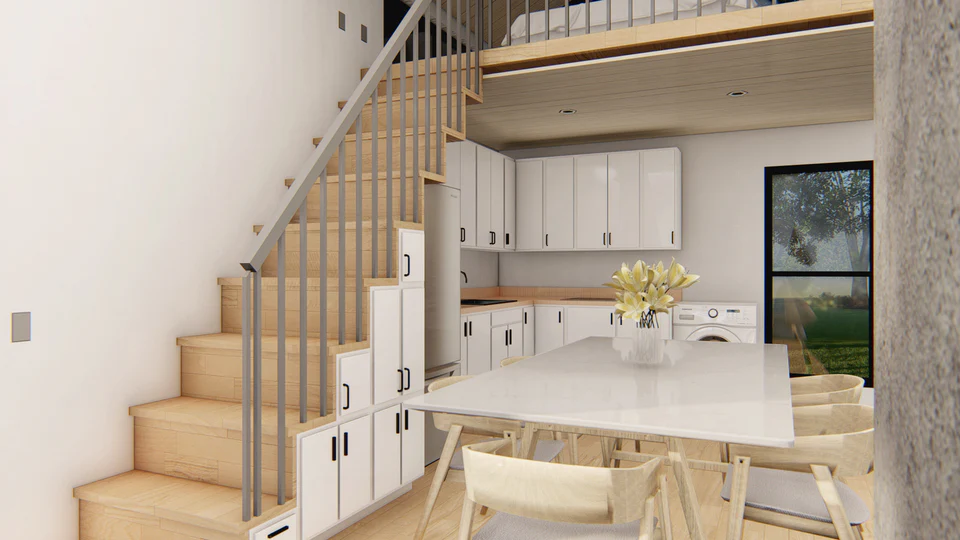Effective Ways to Remove Mold on Wood
.jpg)
To effectively remove mold from wood, start with natural solutions like vinegar or baking soda; they're gentle yet effective. Mix equal parts vinegar and water or a tablespoon of baking soda with a cup of water, apply, and let it sit before scrubbing away. For tougher mold, consider using commercial cleaners designed for wood, following the instructions carefully. Always wear protective gear, like an N95 mask, and guarantee the area is well-ventilated. Dry the wood thoroughly after cleaning to prevent future infestations. Interested in deeply understanding the intricacies of mold removal and further prevention techniques? There's more to uncover.
- Use a vinegar solution (equal parts water and vinegar) to kill mold effectively on wood surfaces.
- Apply a baking soda solution (one tablespoon baking soda per cup of water) to clean and deodorize mold-affected areas.
- Employ commercial mold removers designed for wood to tackle stubborn mold infestations without damaging the material.
- Scrub affected areas with a mixture of water and detergent for a thorough mold removal process.
- Utilize tea tree oil mixed with water (one teaspoon per cup) as a natural mold-removing agent safe for wood.
Understanding Mold on Wood
Mold infestation on wood is a common issue that can compromise the integrity and aesthetics of wooden structures. When you notice discoloration or a musty odor, it's likely that mold has taken root. Mold thrives in damp, humid environments, making wood, especially in basements or bathrooms, an ideal breeding ground. It's essential to understand that mold isn't just unsightly; it can weaken wood fibers over time, leading to structural damage.
To identify mold on wood, look for patches of black, green, or white fuzz. The texture might feel slimy or powdery, depending on the type of mold. Regularly inspecting wooden surfaces can help you catch mold early. Pay attention to areas prone to moisture, like around windows or near leaks.
Knowing what causes mold will help you prevent it. Poor ventilation, leaks, and high humidity are primary culprits. You can manage these conditions by ensuring proper airflow and repairing leaks promptly. Maintaining wood surfaces with sealants or paint can create a barrier against moisture, further reducing mold risk. By understanding these factors, you're better equipped to tackle mold issues before they escalate, preserving your wooden structures effectively.
Safety Precautions First
Before tackling mold removal on wood, prioritize your safety to avoid potential health risks. Mold spores can irritate your respiratory system, so wearing protective gear is essential. Start by putting on a high-quality N95 respirator mask to protect your lungs from inhaling airborne spores. Also, wear gloves and protective eyewear to shield your skin and eyes from contact with mold and cleaning solutions.
Ensure proper ventilation in the area where you're working. Open windows and doors to promote airflow, which helps disperse mold spores and reduce inhalation risks. Consider using fans to increase air circulation, but direct them towards open spaces to avoid spreading mold.
Identify and isolate the affected area to prevent mold from contaminating other parts of your home. Cover nearby furniture and floors with plastic sheets to catch any falling spores during the cleaning process.
Lastly, always have a cleanup plan in place. Dispose of any contaminated materials, such as sponges or rags, in sealed plastic bags. Wash your clothes immediately after finishing the task to remove any mold residues. By following these safety precautions, you'll effectively protect yourself while dealing with mold on wood.
Natural Mold Removal Methods
When you're looking to tackle mold on wood using natural methods, start with ingredients that are both effective and environmentally friendly. Vinegar is a powerful solution for this task. Simply mix equal parts of white vinegar and water in a spray bottle. Apply it directly to the moldy wood and let it sit for an hour. This allows the acetic acid in vinegar to break down the mold. Afterward, scrub the area with a brush and wipe it clean with a damp cloth.
Baking soda is another excellent option. Combine one tablespoon of baking soda with a cup of water and spray it on the affected area. Let it sit for a few minutes, then scrub and rinse. Baking soda not only eliminates mold but also absorbs moisture, preventing future growth.
Tea tree oil is a potent antifungal agent. Mix a teaspoon of tea tree oil with a cup of water, spray it on the mold, and leave it to dry. This solution works well for persistent mold issues.
These natural mold removal methods are safe for wood and your home, offering an effective alternative to chemical cleaners. Use them to maintain a clean, mold-free environment.
Using Commercial Cleaners
Although natural methods offer a gentle approach to mold removal, sometimes you need the power and efficiency of commercial cleaners to tackle stubborn mold on wood. Commercial mold removers are designed to penetrate deep into the wood fibers, guaranteeing thorough eradication of mold spores. When choosing a cleaner, look for products specifically formulated for wood, as they're less likely to damage the surface.
Start by reading the product label carefully. Follow the instructions for mixing and application to guarantee safety and effectiveness. Wear protective gear, like gloves and goggles, as commercial cleaners can be harsh. Test a small, inconspicuous area first to guarantee the cleaner doesn't discolor or damage the wood.
Apply the cleaner using a soft-bristled brush or cloth, scrubbing gently to avoid scratching the wood. Let the cleaner sit for the recommended time to break down mold spores effectively. Rinse the area thoroughly with clean water to remove any residue, and dry the wood completely with a clean towel.
.jpeg)
Preventing Future Mold Growth
To guarantee your wood surfaces remain mold-free in the future, focus on controlling moisture levels and improving ventilation. Mold thrives in damp environments, so it's vital to maintain your home's humidity below 60%. Use a dehumidifier in areas prone to moisture, like basements and bathrooms, and monitor humidity with a hygrometer. Confirm proper ventilation by opening windows and using exhaust fans in kitchens and bathrooms, which helps reduce moisture buildup.
Regular inspections of your home are key to catching potential mold issues early. Check for leaks in roofs, pipes, and around windows and promptly repair any damage. Make sure gutters are clean and direct rainwater away from your home's foundation. Sealing wood surfaces with mold-resistant paint or varnish adds an extra layer of protection.
Consider rearranging furniture to allow air circulation around wooden items, as stagnant air can lead to moisture buildup. Also, avoid placing wood directly on concrete floors, where moisture can seep up. Use vapor barriers or sealants on concrete to prevent this. By staying proactive and addressing moisture issues immediately, you'll greatly reduce the risk of mold growth on your wood surfaces.
Cleaning Mold From Furniture
Mold on furniture can be unsightly and damaging, but with the right approach, you can effectively clean and restore your pieces. Start by moving the affected furniture outdoors, if possible, to prevent mold spores from spreading indoors. Use a vacuum with a HEPA filter to gently remove loose mold spores from the surface. This step is essential to prevent further contamination.
Next, create a cleaning solution by mixing one cup of water with half a cup of white vinegar. Vinegar is a natural mold killer and won't damage your wood furniture. Dampen a clean cloth with the solution and gently wipe the moldy areas. Avoid soaking the wood, as excess moisture can worsen the problem. For stubborn mold spots, use a soft-bristled brush to scrub lightly.
After cleaning, dry the furniture completely using a fan or placing it in a well-ventilated area. Verify no moisture remains, as this could lead to mold regrowth. Finally, polish the wood with a suitable wood conditioner to restore its shine and protect it from future mold infestations. Regularly inspect your furniture to catch any mold growth early and maintain its condition.
Dealing With Severe Mold Cases
When you encounter severe mold cases on wood, it's crucial to act swiftly to prevent extensive damage. Mold can compromise the structural integrity of wood, so you must address the issue promptly. First, assess the extent of the mold infestation. If the affected area is larger than 10 square feet, contacting a professional mold remediation expert is advisable. They have the tools and expertise to handle severe cases safely and effectively.
For smaller areas, equip yourself with protective gear, including gloves, a mask, and goggles to prevent exposure. Use a mixture of bleach and water (1 cup bleach per gallon of water) to scrub the moldy surface. Verify the area is well-ventilated during this process. Afterward, thoroughly dry the wood with fans or dehumidifiers to prevent mold recurrence.
Consider applying a mold-resistant sealant to protect the wood from future infestations. Regularly inspect and maintain the wood to catch any signs of mold early. Remember, prevention is key; control humidity levels and verify proper ventilation in areas prone to mold growth.
Conclusion
To tackle mold on wood effectively, start by understanding its causes and prioritize safety. Use natural methods or commercial cleaners based on your needs. Regularly clean furniture and keep humidity levels low to prevent future growth. For severe cases, consider professional help. By following these steps, you'll maintain a mold-free environment and protect your wooden surfaces. Remember, consistent care is key to preventing mold, ensuring your home stays healthy and inviting.








.jpg)
